Recent Publications: A selection of books by ISAW community members
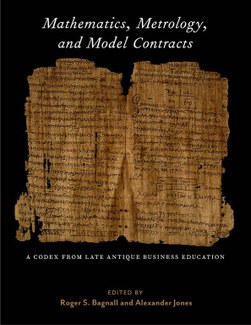
Mathematics, Metrology, and Model Contracts: A Codex from Late Antique Business Education (New York: NYU Press, 2020).
Roger S. Bagnall (ISAW Emeritus Professor of Ancient History and Leon Levy Director Emeritus) and Alexander Jones (ISAW Professor of the History of the Exact Sciences in Antiquity and Leon Levy Director), eds.,
Mathematics, Metrology, and Model Contracts is a comprehensive edition and commentary of a late antique codex. The codex contains mathematical problems, metrological tables, and model contracts. Given the nature of the contents, the format, and quality of the Greek, the editors conclude that the codex most likely belonged to a student in a school devoted to training business agents and similar professionals. The editors present here the first full scholarly edition of the text, with complete discussions of the provenance, codicology, and philology of the surviving manuscript. They also provide extensive notes and illustrations for the mathematical problems and model contracts, as well as historical commentary on what this text reveals about late antique numeracy, literacy, education, and vocational training in what we would now see as business, law, and administration. The book will be of interest to papyrologists and scholars who are interested in the history and culture of late antiquity, the history of education, literacy, the ancient economy, and the history of science and mathematics. (NYU Press)

DATAM: Digital Approaches to Teaching the Ancient Mediterranean (Digital Press at the University of North Dakota, 2020).
Sebastian Heath (ISAW Clinical Associate Professor of Computational Humanities and Roman Archaeology), ed.
DATAM: Digital Approaches to Teaching the Ancient Mediterranean provides a series of new critical studies that explore digital practices for teaching the Ancient Mediterranean world at a wide range of institutions and levels. These practical examples demonstrate how gaming, coding, immersive video, and 3D imaging can bridge the disciplinary and digital divide between the Ancient world and contemporary technology, information literacy, and student engagement. While the articles focus on Classics, Ancient History, and Mediterranean archaeology, the issues and approaches considered throughout this book are relevant for anyone who thinks critically and practically about the use of digital technology in the college-level classroom.
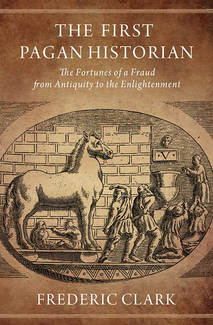
The First Pagan Historian: The Fortunes of a Fraud from Antiquity to the Enlightenment (New York: Oxford University Press, 2020).
Frederic Clark (ISAW VRS 2015-17)
In The History of the Destruction of Troy, Dares the Phrygian boldly claimed to be an eyewitness to the Trojan War, while challenging the accounts of two of the ancient world's most canonical poets, Homer and Virgil. For over a millennium, Dares' work was circulated as the first pagan history. It promised facts and only facts about what really happened at Troy — precise casualty figures, no mention of mythical phenomena, and a claim that Troy fell when Aeneas and other Trojans betrayed their city and opened its gates to the Greeks. But for all its intrigue, the work was as fake as it was sensational. From the late antique encyclopedist Isidore of Seville to Thomas Jefferson, The First Pagan Historian offers the first comprehensive account of Dares' rise and fall as a reliable and canonical guide to the distant past. Along the way, it reconstructs the central role of forgery in longstanding debates over the nature of history, fiction, criticism, philology, and myth, from ancient Rome to the Enlightenment.
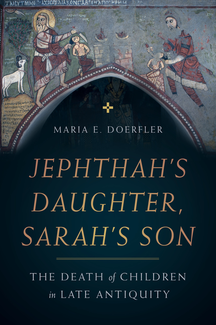
Jephthah’s Daughter, Sarah’s Son: The Death of Children in Late Antiquity (Oakland, CA: University of California Press, 2020)
Maria E. Doerfler (ISAW VRS 2014-15)
Late antiquity was a perilous time for children, who were often the first victims of economic crisis, war, and disease. They had a one in three chance of dying before their first birthday, with as many as half dying before age ten. Christian writers accordingly sought to speak to the experience of bereavement and to provide cultural scripts for parents who had lost a child. These late ancient writers turned to characters like Eve and Sarah, Job and Jephthah as models for grieving and for confronting or submitting to the divine. Jephthah's Daughter, Sarah’s Son traces the stories these writers crafted and the ways in which they shaped the lived experience of familial bereavement in ancient Christianity. A compelling social history that conveys the emotional lives of people in the late ancient world, Jephthah's Daughter, Sarah's Son is a powerful portrait of mourning that extends beyond antiquity to the present day. (University of California Press)
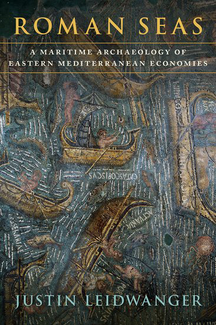
Roman Seas: A Maritime Archaeology of Eastern Mediterranean Economies (Oxford: Oxford University Press, 2020)
Justin Leidwanger (ISAW VRS 2011-12)
That seafaring was fundamental to Roman prosperity in the eastern Mediterranean is beyond doubt, but a tendency by scholars to focus on the grandest long-distance movements between major cities has obscured the finer and varied contours of maritime interaction. This book offers a nuanced archaeological analysis of maritime economy and connectivity in the Roman east. Drawing together maritime landscape studies and network analysis, Roman Seas takes a bottom-up view of the diverse socioeconomic conditions and seafaring logistics that generated multiple structures and scales of interaction. The material record of shipwrecks and ports along a vital corridor from the southeast Aegean across the northeast Mediterranean provides a case study of regional exchange and communication based on routine sails between simple coastal harbors. Rather than a single well-integrated and persistent Mediterranean network, multiple discrete and evolving regional and interregional systems emerge. This analysis sheds light on the cadence of economic life along the coast, the development of market institutions, and the regional continuities that underpinned integration-despite imperial fragmentation-between the second century BCE and the seventh century CE. Roman Seas advances a new approach to the synthesis of shipwreck and other maritime archaeological and historical economic data, as well as a path through the stark dichotomies-either big commercial voyages or small-scale cabotage-that inform most paradigms of Roman connectivity and trade. The result is a unique perspective on ancient Mediterranean trade, seafaring, cultural interaction, and coastal life. (Oxford University Press)
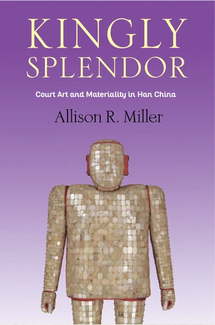
Kingly Splendor: Court Art and Materiality in Han China (New York: Columbia University Press, 2021)
Allison R. Miller (ISAW VRS 2018-19)
The Western Han dynasty (202 BCE–9 CE) was a foundational period for the artistic culture of ancient China, a fact particularly visible in the era’s funerary art. Iconic forms of Chinese art such as dazzling suits of jade; cavernous, rock-cut mountain tombs; fancifully ornate wall paintings; and armies of miniature terracotta warriors were prepared for the tombs of the elite during this period. Many of the finest objects of the Western Han have been excavated from the tombs of kings, who administered local provinces on behalf of the emperors. Allison R. Miller paints a new picture of elite art production by revealing the contributions of the kings to Western Han artistic culture. She demonstrates that the kings were not mere imitators of the imperial court but rather innovators, employing local materials and workshops and experimenting with new techniques to challenge the artistic hegemony of the imperial house. Tombs and funerary art, Miller contends, functioned as an important vehicle of political expression as kings strove to persuade the population and other elites of their legitimacy. Through case studies of five genres of royal art, Miller argues that the political structure of the early Western Han, with the emperor as one ruler among peers, benefited artistic production and innovation. Kingly Splendor brings together close readings of funerary art and architecture with nuanced analyses of political and institutional dynamics to provide an interdisciplinary revisionist history of the early Western Han. (Columbia University Press)
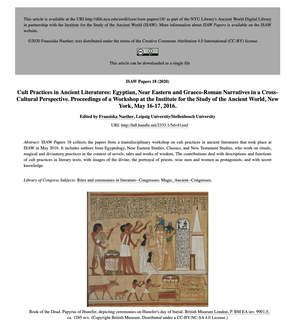
Cult Practices in Ancient Literatures: Egyptian, Near Eastern and Graeco-Roman Narratives in a Cross-Cultural Perspective. Proceedings of a Workshop at the Institute for the Study of the Ancient World, New York, May 16-17, 2016 (ISAW Papers, 2020)
Franziska Naether (ISAW VRS 2015-16), ed.
ISAW Papers 18 collects the papers from a transdisciplinary workshop on cult practices in ancient literatures that took place at ISAW in May 2016. It includes authors from Egyptology, Near Eastern Studies, Classics, and New Testament Studies, who work on rituals, magical and divinatory practices in the context of novels, tales and works of wisdom. The contributions deal with descriptions and functions of cult practices in literary texts, with images of the divine, the portrayal of priests, wise men and women as protagonists, and with secret knowledge. (ISAW Papers)
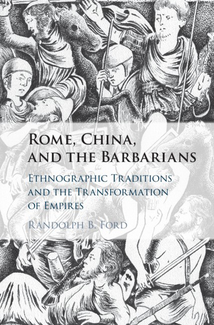
Rome, China, and the Barbarians: Ethnographic Traditions and the Transformation of Empires (Cambridge: Cambridge University Press, 2020)
Randolph B. Ford (ISAW PhD Alumnus 2016)
This book addresses a largely untouched historical problem: the fourth to fifth centuries AD witnessed remarkably similar patterns of foreign invasion, conquest, and political fragmentation in Rome and China. Yet while the Western Roman Empire was never reestablished, China was reunified at the end of the sixth century. Following a comparative discussion of earlier historiographical and ethnographic traditions in the classical Greco-Roman and Chinese worlds, the book turns to the late antique/early medieval period, when the Western Roman Empire 'fell' and China was reconstituted as a united empire after centuries of foreign conquest and political division. Analyzing the discourse of ethnic identity in the historical texts of this later period, with original translations by the author, the book explores the extent to which notions of Self and Other, of 'barbarian' and 'civilized', help us understand both the transformation of the Roman world as well as the restoration of a unified imperial China.
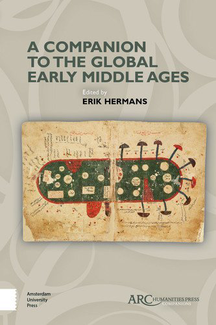
A Companion to the Global Early Middle Ages (Leeds: Arc Humanities Press, 2020)
Erik Hermans (ISAW PhD Alumnus 2016), ed.
This companion introduces the connections between early medieval societies that have previously been studied in isolation. By bringing together nineteen experts on different regions across the globe, from Oceania to Europe and beyond, it transcends conventional disciplinary boundaries and synthesizes parallel historiographical narratives. The period 600-900 CE witnessed important historical developments, such as the establishment of a Southeast Asian thalassocracy by the Shailendra dynasty and the expansion of the Frankish polity under Charlemagne on the far ends of Eurasia and the consolidation of the Abbasid and Tang empires in between. A Companion to the Global Early Middle Ages integrates these contemporaneous processes and presents new insights into a neglected phase of world history. (Arc Humanities Press)
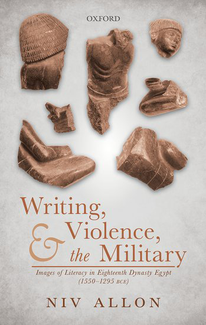
Writing, Violence, and the Military: Images of Literacy in Eighteenth Dynasty Egypt (1550- 1275 BCE) (Oxford: Oxford University Press, 2019)
Niv Allon (ISAW Research Associate)
Writing, Violence, and the Military takes representations of reading and writing in Eighteenth Dynasty Egypt (ca. 1550-1295 BCE) as its point of departure, asking how patrons of art conceptualized literacy and how in turn they positioned themselves with respect to it. Exploring statuary and tomb art through the prism of self-representation and group formation, it makes three claims. Firstly, that the elite of this period held a variety of notions regarding literacy, among which violence and memory are most prominent. Secondly, that among the Eighteenth Dynasty elite, literacy found its strongest advocates among men whose careers brought them to engage with the military, either as military officials or as civil administrators who accompanied the army beyond the borders of Egypt. Finally, that Haremhab - the General in Chief who later ascended the throne - voiced unique views regarding literacy that arose from his career as an elite military official, and thus from his social world. Consequently, images of reading and writing allow us to study literacy with regard to those who commissioned them, and to consider these patrons' roles in changing conceptualizations. Throughout their different formulations, these representations call for a discussion on literacy in relation to self-representation and to art's role in society. They also invite us to reconsider our own approach to literacy and its significance in ancient times. (Oxford University Press)
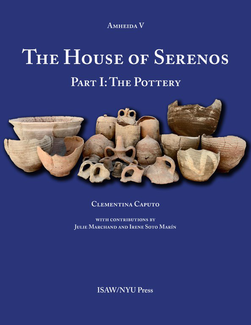
Amheida V: The House of Serenos, Part I: The Pottery (ISAW/NYU Press, 2020)
Clementina Caputo
The House of Serenos, Part I: The Pottery (Amheida V) is a comprehensive catalog and analysis of the ceramic finds from the late antique house of a local notable and adjacent streets in ancient Trimithis. Amheida is located in the western part of the Dakhla oasis, 3.5 km south of the medieval town of El-Qasr. Known in Hellenistic and Roman times as Trimithis, Amheida became a polis by 304 CE and was a major administrative center of the western part of the oasis for the whole of the fourth century. The home’s owner was one Serenos, a member of the municipal élite and a Trimithis city councillor, as we know from documents found in the house. His house is particularly well preserved with respect to floor plan, relationship to the contemporary urban topography, and decoration, including domestic display spaces plastered and painted with subjects drawn from Greek mythology and scenes depicting the family that owned the house. The archaeology from the site also reveals the ways in which the urban space changed over time, as Serenos’s house was built over and expanded into some previously public spaces. The house was probably abandoned around or soon after 370 CE. The pottery analyzed in this volume both helps to refine the relationship of the archaeological layers belonging to the élite house and those below it, and to shed light on the domestic and economic life of the household and region, from cooking and dining to the management of a complex agricultural economy in which ceramics were the most common form of container for basic commodities.